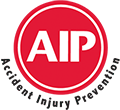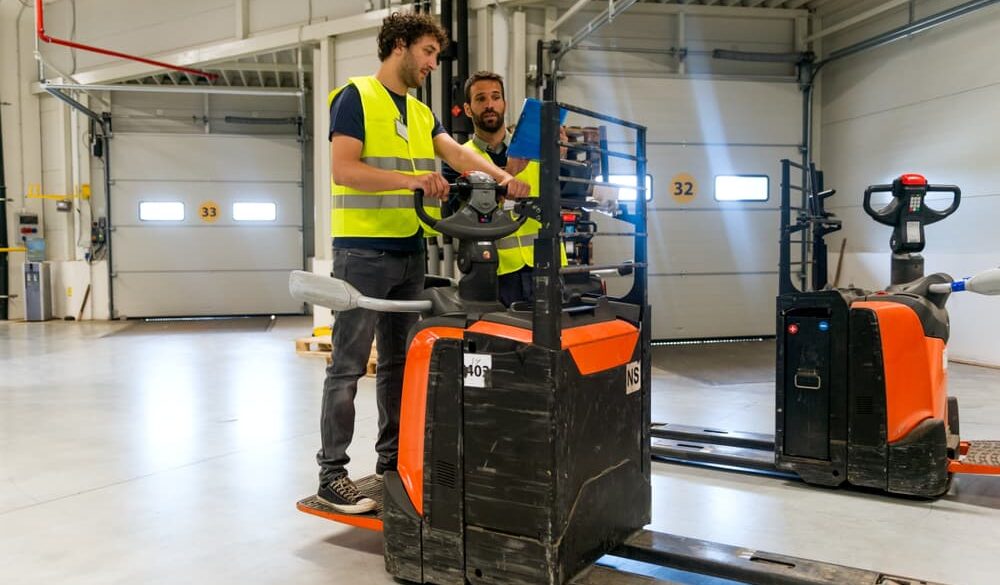At AIP Safety, we aim to arm individuals with world-class safety and health management systems. Our belief in and commitment to safe training practices has enabled us to train thousands of workers and serve businesses for over a decade.
We cover everything from fall protection awareness and WHMIS training to workplace violence and, yes, forklift initial training courses.
Forklifts are among the most used pieces of machinery on construction sites, warehouses, and even big box stores. And for good reason. Forklifts can lift and transport immense loads that humans simply can’t, making them an invaluable asset on many job sites.
And because forklifts offer so much utility, many forklift initial training courses in Calgary are available. But to help you better understand forklifts, we at AIP Safety have compiled a list of ten different forklifts and their appropriate applications.
1. The Warehouse Forklift
Easily one of the most well-known lifts is the warehouse forklift. It’s similar to a golf cart in size and appearance, with the exception of its twin forks protruding from the front end. Typically, this forklift is found in inventory-heavy warehouses and bustling construction sites.
One of its key attributes is its loading capacity. With the ability to load between one and five tons, the warehouse forklift is a powerhouse on any site or facility. However, it is best suited for lifting and delivering materials over small distances.
2. Side Loader
Side loaders are typically used in production facilities and steel service centres with bulky and voluminous objects and items. The driver is perched in a sideways receptacle while the side loader unpacks materials. Because of its sideways functionality, side loaders can effortlessly drive by shelves and racks, loading and unloading without turning.
This quality makes side loader forklifts ideal for navigating small and narrowing aisles and managing extensive freight like pipes or lumber. Side loaders are used by many top manufacturer brands such as Raymond, Hyundai, Toyota, and more.
3. Counterbalance Forklift
The counterbalance forklift’s design explains its name. To counterbalance hefty loads, it features forks in the front and a weight in the back. In addition, these forklifts lack extending arms, which allows them to proceed straight to the load.
Different counterbalance forklifts include:
- The 3-wheel variant: Perfect for circumstances that require the driver to turn in circles.
- The stand-up counterbalance forklift: This counterbalance forklift lets operators effortlessly jump on and off in between loads.
Counterbalance forklifts are ideal in situations where circular maneuvering is required by the operator.
4. Rough Terrain Forklift
A rough terrain forklift is designed for outdoor use with bumpy surfaces. It offers stability for uneven terrain. These lifts possess robust pneumatic tires that are threaded and oversized, which gives them the balance needed to deliver items and objects on rugged grounds safely.
You won’t require a rough terrain forklift if your work is indoors. But these lifts are necessary for outdoor applications where rugged terrain is present. Construction sites typically fall into this category.
5. Pallet Jack
Also referred to as pump trucks, pallet jacks cannot raise heavy loads due to their small-scale design. The pallet jack composition sacrifices power for versatility. It features a small footprint which permits it to fit into compact areas and lift small loads in dense quarters. As a result, the price of acquiring and renting a pallet jack is significantly reduced.
6. Telehandler
The telehandler combines a forklift and crane with a boom and extendable arm—the twin forks connected to the arm transfer pallets from the ground. A conventional telehandler can lift a load of up to 5,500 lbs to 19 feet in the air and reach into compact areas and strange angles.
The telehandler forklift handles heavy loads that require a lift to higher elevations. This process is accomplished by its extendable attached arm and articulating boom.
7. Heavy-Duty Forklift
Heavy-duty forklifts blend the performance of a telehandler forklift with a warehouse forklift. Moreover, they can lift heavier loads than their warehouse counterpart. This power is only needed for specialized jobs.
A vital feature of the heavy-duty forklift is the hydraulic levers. These mechanisms blend power and reach within the heavy-duty forklift, making it ideal for industrial facilities delivering heavy loads.
8. Walkie Stacker
Distinct in presentation and particular in application, walkie stacker lifts lack the cab receptacle afforded to other forklifts. Instead, the driver follows the stacker from behind while steering it via a connected handle. These lifts are perfect for tall pallet jack applications. They lack power and mobility but more than make up for it in elevation capabilities.
9. Reach Fork Truck
Primarily used for indoor applications, the reach fork truck is a storeroom lift. It comes with a critical attribute that allows it to extend its forks to reach into racks in a manner that conventional forklifts cannot do. Moreover, it has an open cab that enhances the operator's visibility.
The reach fork truck is designed for indoor use. Outdoor applications will require a different forklift as this machine is ill-equipped for such environments due to its insufficient undercarriage clearance.
10. Order Picker
Typically considered a subtype of the walkie stacker, order picker lifts are used to pick up and transfer items from storage spaces. With the ability to reach heights of 32 feet, an order picker is designed to raise operators to high shelves and racks. These machines are ideal for storage facilities and warehouse inventory applications since they can select singular units without bringing down entire pallets.
A versatile design ensures they can process items of diverse dimensions, from auto components to furnishings.
Final Thoughts: The Importance of Forklift Safety
The use of forklifts makes the jobs of countless tradespeople easier. But a forklift (regardless of its variation) is a machine that requires knowledge and education to operate safely. That’s why we at AIP Safety have created resources in the form of helpful courses to ensure your workers understand the best practices of forklift operation.
Contact us today if you’re interested in learning more about our courses and other resources.

